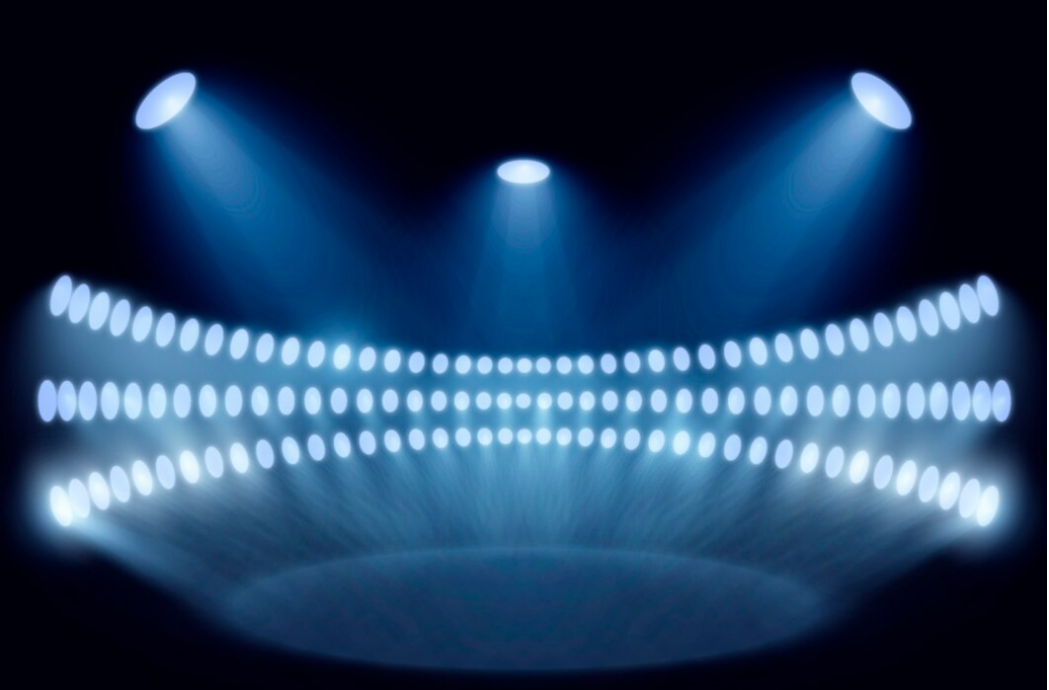
Get A Quote
What are Stadium Lights Called and Why Stadium Use LED Lights?
What are stadium lights called?In the realm of sports illumination, these potent luminaries boast narrow beam angles, typically spanning from 12 to 60 degrees. This unique setup empowers them to emit intense beams of light, piercing the darkness and illuminating the ground from impressive distances. These high-reaching lights play a pivotal role in ensuring optimal visibility in both outdoor and indoor sports arenas, particularly when the sun dips below the horizon or when natural light is scarce.I will show you why stadium use led lights and what type of lights are used in stadiums .
What Type of Lights are Used in Stadiums ?
The world of stadium lights is a diverse landscape, with variations in height, wattage, lumens, color temperature, and color rendering. These specifications are finely tuned to cater to the specific needs and dimensions of the sports venue they illuminate. Each element carefully calibrated to ensure that every corner of the arena is bathed in the perfect glow, allowing athletes and spectators alike to revel in the game with utmost clarity and enthusiasm.
In today's sporting arenas, LED lights have become the go-to choice for illuminating football stadiums. The rise of LED (Light Emitting Diode) technology has sparked a revolution in stadium lighting, outshining traditional options like incandescent or metal halide lights. The popularity of LEDs in this arena is no surprise, given their myriad advantages that set them miles apart from the outdated lighting alternatives. Let me tell you why stadium use led lights。
Why Stadium Use LED Lights?
LED lights offer a multitude of advantages, making them the top choice for modern stadiums worldwide.
Energy Efficiency: LED lights are incredibly energy-efficient, consuming far less electricity than traditional lighting sources. This not only translates into substantial savings on energy bills but also contributes to a greener environment.
Brilliance and Consistency: LED lights deliver exceptional brightness and uniform illumination across the playing field, ensuring optimum visibility for both players and spectators. The consistency in lighting enhances the overall game experience.
Instant Operation: One of the standout features of LED lights is their instant on/off capability. Unlike traditional lights, there's no warm-up time, allowing for swift lighting adjustments to match the game's dynamics.
Extended Lifespan: LED lights boast an impressively long lifespan, far surpassing traditional lights. They can endure tens of thousands of hours of operation before requiring replacement. This longevity drastically reduces maintenance and replacement costs for stadium operators.
Customizability: LED lights offer unparalleled control and dimming options. This flexibility enables dynamic lighting effects, creating an electrifying atmosphere during matches. Moreover, the lighting levels can be tailored to meet specific requirements, ensuring optimal conditions for players and fans alike.
Eco-Friendly: Unlike traditional lights, LED lights are environmentally friendly. They contain no harmful substances like mercury and emit fewer carbon emissions, aligning with the growing focus on sustainable practices in modern sports facilities.
Given these compelling advantages, it's no wonder that LED lights have become the lighting solution of choice for football stadiums globally, enhancing the overall lighting experience for players, officials, and spectators alike.
How Do Stadium Light Use?
Football stadium lighting is a meticulous orchestration of various components, crucial to the electrifying atmosphere of the game. At the heart of this brilliance are the lighting fixtures, strategically positioned throughout the stadium. These fixtures, often mounted on towering poles or surrounding structures, ensure even illumination across the sprawling field.
The backbone of this illumination is the power supply, intricately woven into the stadium's electrical grid. The main power grid feeds energy to the lighting fixtures, a crucial link that keeps the stadium bathed in light. In modern stadiums, LED (Light Emitting Diode) technology has taken center stage, offering unparalleled energy efficiency and brilliant luminosity. Yet, some stadiums still cling to traditional technologies like metal halide lamps, reminding us of the balance between the old and the new in sports arenas.
But it's not just about illuminating the field; it's about control. A sophisticated control system takes the reins, allowing operators to choreograph the lights. Whether it's turning them on or off, adjusting brightness levels to match the game's intensity, or creating mesmerizing lighting effects that echo the crowd's excitement, the control system is the stadium's conductor, ensuring every moment is perfectly lit.
Lighting design, akin to an intricate dance, considers the stadium's size, layout, and specific lighting requirements. Engineers and lighting specialists collaborate to devise a plan ensuring not just adequate, but extraordinary, lighting for players, officials, and spectators. The fixtures are meticulously positioned, their angles calibrated to achieve the perfect beam orientation. This precision ensures the field is brilliantly lit, minimizing any glare or distracting shadows that could mar the players' focus or hinder spectators' enjoyment.
Yet, this spectacle demands maintenance and vigilance. Regular check-ups, fixture replacements, and performance evaluations become routine. The lighting system, like a finely tuned machine, must be monitored to guarantee its optimal function, preserving the stadium's electrifying ambiance for every match, leaving spectators in awe and players in the spotlight.
Conclusion
Why stadium use LED lights?In the dynamic realm of stadium illumination, LED lights stand tall as the vanguard of the future. Major sporting entities have taken the plunge, opting for cutting-edge LED technology over the outdated HID counterparts. This is a revolution , so come to INFRAALUMIN to learn more about LED lights.

